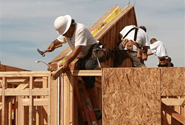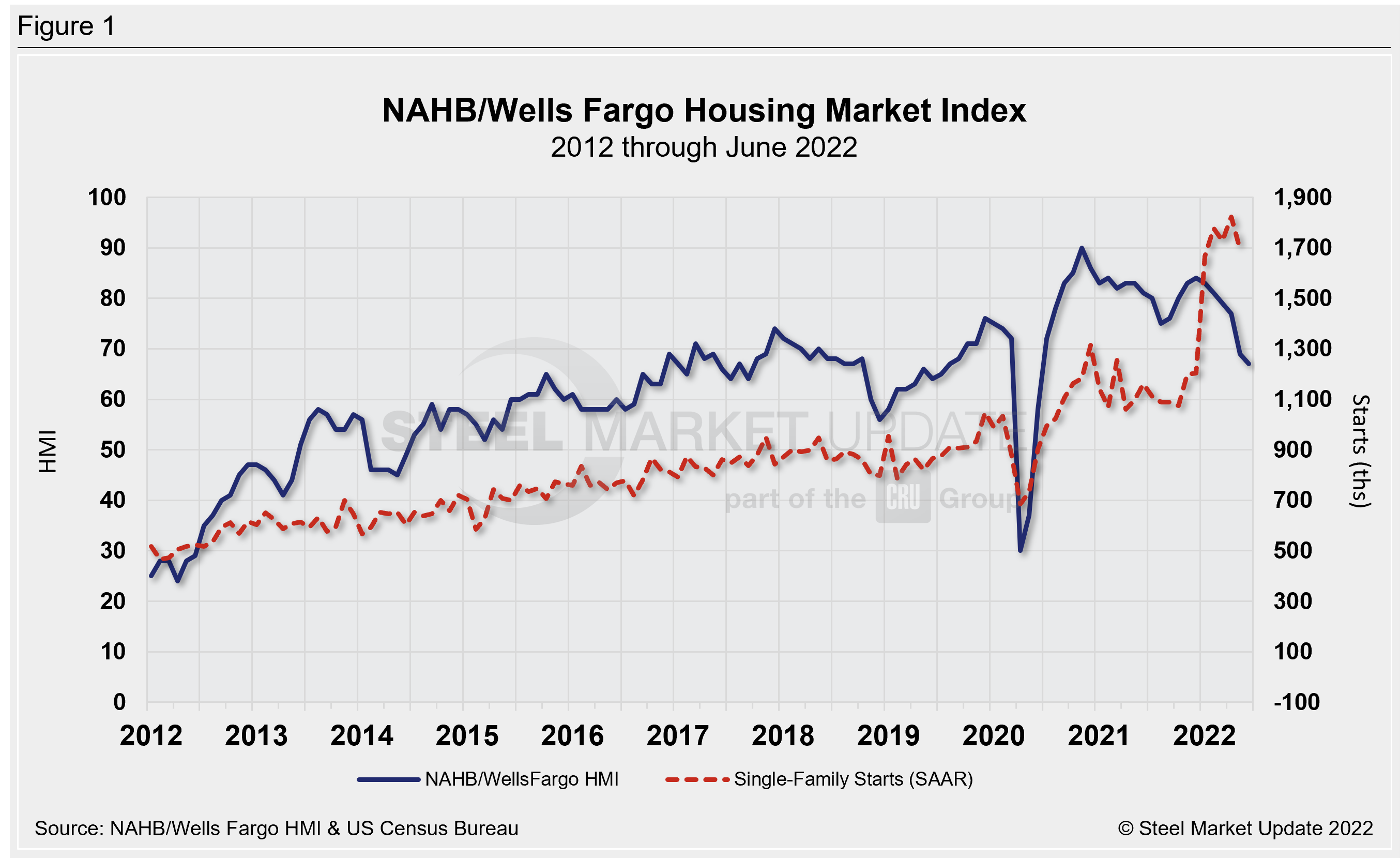Steel Markets

NAHB: Tightening Financial Conditions Slow Housing
Written by David Schollaert
July 10, 2022
Rising inflation and higher mortgage rates are slowing traffic of prospective home buyers and putting a damper on builder sentiment. According to the National Association of Home Builders/Wells Fargo Housing Market Index (HMI), the headline number fell two more points to a level of 67 in June – the lowest HMI reading since June 2020.
Six consecutive monthly declines for the HMI is a clear sign of a slowing housing market in an environment of high inflation and slow economic growth, the report said.
With inflation running at a 40-year high, economic policy needs to focus on improving the supply side of the economy by bringing down material, energy, and transportation costs. Largely because of these supply-chain challenges, single-family starts decreased 9.2% in May to an annual rate of 1.55 million.
Single-family permits decreased as well, dropping 5.5% and bringing the annual rate down to 1.05 million – the slowest pace since July 2020. Further declines are expected in the months ahead.

Total existing-home sales in May — including single-family homes, townhomes, condominiums, and co-ops — fell 3.4% to a seasonally adjusted annual rate of 5.41 million. On a year-over-year basis, sales were 8.6% lower than. However, after posting four consecutive monthly declines on rising mortgage rates and worsening affordability conditions, new home sales posted a solid gain in May as some buyers rushed into the market in advance of the Federal Reserve’s June interest rate hike.
New home sales surged 10.7% to a 696,000 seasonally adjusted annual rate, although year-to-date sales are 10.6% lower compared to a year ago.
New single-family home inventory remained elevated at a 7.7-month supply, up 42.6% over last year, with 444,000 available for sale. However, only 8.3% of new home inventory is completed and ready to occupy. The median sales price dipped to $449,000 in May, but is up 15% compared to a year ago, primarily because of higher construction and development costs, including materials.
The NAHB expects a modest economic recession in mid-2023 given tightening financial conditions and increased economic uncertainty. Higher interest rates are expected to slow housing and business investment, acting as a drag on economic growth.
The unemployment rate is therefore expected to rise from near-cycle lows to above 5% in 2023, while broader-based inflation will ease further as the economy slows, the report concluded.
By David Schollaert, David@SteelMarketUpdate.com

David Schollaert
Read more from David SchollaertLatest in Steel Markets

Steel buyer spirits tempered by soft spot market conditions
Steel sheet buyers report feeling bogged down by the ongoing stresses of stagnant demand, news fatigue, tariff negotiations or implementation timelines, and persistent macroeconomic uncertainty.

Hot-rolled coil buyers continue seeking certainty
Steel market participants contend that buyers will remain in “wait-and-see" mode until some market stability is restored.

Latin American steel advocates warn on cheap import flood
Subsidized Chinese steel imports and cheap steel products from Association of Southeast Asian Nations (ASEAN) entering Latin American (LATAM) are threatening the region's steel market.

CRU: Steel prices fall amid global demand weakness
The forceful headwinds bearing down on steel markets across the globe have created demand challenges and sent prices southward. The US, however, challenged the global trend.

Hot-rolled price hikes garner mixed reactions from the market
Several steel market sources say they were blindsided when mills increased spot prices for hot-rolled coils this week.
